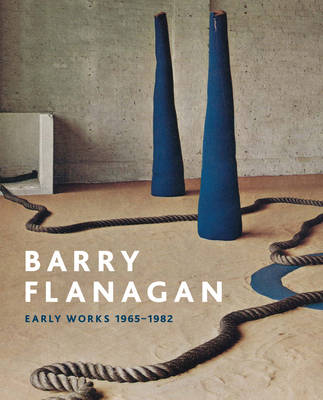
- Afhalen na 1 uur in een winkel met voorraad
- Gratis thuislevering in België vanaf € 30
- Ruim aanbod met 7 miljoen producten
- Afhalen na 1 uur in een winkel met voorraad
- Gratis thuislevering in België vanaf € 30
- Ruim aanbod met 7 miljoen producten
Zoeken
Omschrijving
The sculptor Barry Flanagan (1941-2009) was best known for his bronze hare sculptures that walk, leap or sit in galleries and public spaces around the world. The success of these and related animal sculptures relatively late in his career has somewhat obscured the achievements that characterised Flanagan's earlier period. Focusing on the artist's studio practice, this book brings together works from between 1965 and 1982, re-evaluating Flanagan's position as a key figure in the development of British and international sculpture. Using media as varied as cloth, felt, clay, plaster and rope, Flanagan created works that were a unique exploration of the interaction of idea, form and process. The authors also investigate Flanagan's engagement with literature, especially concrete poetry, and 'pataphysics, the pseudo-science derived from the writings of Alfred Jarry, which was a key inspiration. Flanagan trained at St Martins School of Art, where he was taught by Anthony Caro, Phillip King and John Latham. At different times during his career he was involved with magazine publication, film making, dance and performance, as well as sculpture, each discipline feeding into and enriching the other. This first comprehensive, extensively illustrated study of Flanagan's early years ends with the production of his first hare sculpture in 1982, and accompanies a major exhibition at Tate Britain.
Specificaties
Betrokkenen
- Auteur(s):
- Uitgeverij:
Inhoud
- Aantal bladzijden:
- 160
- Taal:
- Engels
Eigenschappen
- Productcode (EAN):
- 9781854379979
- Verschijningsdatum:
- 22/09/2011
- Uitvoering:
- Paperback
- Afmetingen:
- 220 mm x 275 mm
- Gewicht:
- 800 g

Alleen bij Standaard Boekhandel
+ 55 punten op je klantenkaart van Standaard Boekhandel
Beoordelingen
We publiceren alleen reviews die voldoen aan de voorwaarden voor reviews. Bekijk onze voorwaarden voor reviews.








